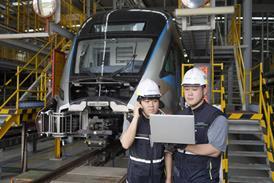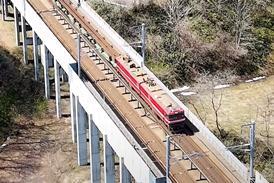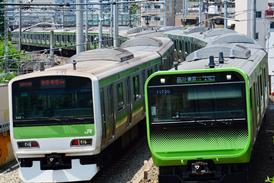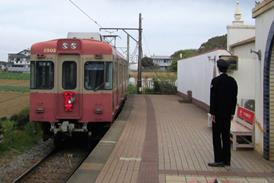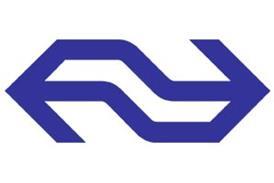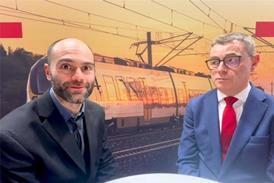Features & Analysis
-
 In depth
In depthTelecoms: Operators discuss 6G technology as South Korean government aims launch by 2028
Amid a push from the national government to launch a 6G telecoms network by 2028, Korea Railroad Research Institute is assessing how domestic railway operators could deploy the technology. Benjámin Zelki reports.
-
 In depth
In depthJapan: Delays and demographic dilemmas hinder Hokkaido Shinkansen ambition
Geological difficulties have delayed the completion of the Hokkaido Shinkansen extension to Sapporo beyond 2030, while JR Hokkaido is considering the deployment of 160 to 200 km/h EMUs on its 1 067 mm network, as well as bus replacements for loss-making rural routes. Mike Bent investigates.
-
 In depth
In depthJapan: Autonomous Operation offers flexibility with fewer staff
Trials on the RTRI test track near Tokyo have verified the performance of onboard detection and decision-making systems that could form the basis for autonomous train operations.
-
 In depth
In depthComment: Demography is destiny
The demographic challenges facing many countries around the world mean that rail’s ability to cost-effectively deliver benefits in low-density regions such as rural Japan or much of France is in the spotlight, our Executive Editor Nick Kingsley warns.
-
 In depth
In depthFreight: Rolling laboratory supports innovation
Portugal’s Rail CoLab association is developing its Freight Laboratory Train to act as a platform for both monitoring systems and the testing of new concepts, as Andre Pires explains.
-
 In depth
In depthEurope: Franco-Italian Mont Cenis base tunnel project forges ahead
A key element in the east-west Mediterranean Corridor, the Mont Cenis base tunnel will be a cornerstone of the TEN-T network, as well as offering an improved link between the French and Italian capitals. Reinhard Christeller reports from the construction site.
-
 In depth
In depthResearch: AŽD Praha's autonomous train is on track
Following successful passenger carrying trials with its prototype autonomous train on the Kopidlnka line, AŽD Praha is looking to optimise the technology for commercial operations to start in 2029. Chris Jackson reports from Dětenice.
-
 In depth
In depthAustralia: Untangling Sydney’s complex suburban network
Sydney Trains is managing a long-term fleet renewal programme while deploying ETCS and reshaping its network to complement the expansion of the city’s metro. Chief Executive Matt Longland outlines to Benjámin Zelki how these competing priorities are being delivered.
-
 In depth
In depthFreight: A fresh approach to wagon bearing health
Flats on wagon wheelsets continue to pose a derailment risk to railways around the world. Technology company Trilogical believes its novel approach to monitoring vibration could offer more reliable insights into wheelset condition.
-
 In depth
In depthAustralia: Melbourne’s Suburban Loop reaches lift-off
Melbourne’s Suburban Rail Loop is ultimately expected to add 90 km of 1 435 mm gauge automated rail service to the city’s rail mix, but project promoter SRLA is currently focusing on delivering the first 26 km section. Benjámin Zelki reports.
-
 Rail Business UK
Rail Business UKInterview: ‘We are waking Merseyrail up’
As its 25-year agreement to run electric suburban services around Liverpool nears its end, Merseyrail has become a model for how local control of rail operations can bring tangible benefits to the community, as its Managing Director Neil Grabham explains to Nick Kingsley.
-
 In depth
In depthInnovation: Testing and revenue service trials mark Digital Automatic Coupling progress
Digital Automatic Couplings are expected to transform the prospects for European rail freight, with fundamental changes to both technology and operations, but introduction can only be achieved step by step. Testing and revenue service trials are now underway, preparing the path to a widespread roll-out.
-
 In depth
In depthAustralia: Melbourne’s Metro Tunnel poised to reshape city connectivity
The opening of Melbourne’s cross-city tunnel for revenue operation paves the way for a network-wide timetable change in February, which will reshape the Sunbury – Cranbourne/Pakenham axis and release capacity for additional services on other suburban lines. Benjámin Zelki investigates.
-
 In depth
In depthComment: Tensions around Swiss tunnel regulation reflect SERA challenge
Switzerland’s recent changes to its national wagon safety regulations following the 2023 Gotthard Base Tunnel derailment have sparked a debate over how far national interests should override pan-European interoperability ambitions, says our Executive Editor Nick Kingsley.
-
 In depth
In depthBaltic States: Co-operation and competition drive network development
While Rail Baltica moves slowly towards its planned opening in 2030, the national railways in the three Baltic States are continuing to invest in modernising their broad gauge networks and integrating their domestic and international operations into the wider European network, as Vladimir Waldin explains.
-
 In depth
In depthRolling Stock: Insulation delivers energy savings
Advances in the design of materials used for insulation and HVAC systems on trains can help rail operators to reduce their energy use by up to 20% in real-world conditions. Tom Merton, Technical Manager at Armacell, explains how the company’s range is evolving to cater to the specialist needs of the rail sector.
-
 In depth
In depthInfrastructure: Scour monitoring helps to bridge the gap
Field trials are currently under way with an AI-assisted real-time monitoring system able to detect the emergence of scour that could undermine the safety of railway bridges over flowing water.
-
 In depth
In depthInfrastructure: Embracing nature can enhance rail’s soft resilience
The International Union of Railways is urging more railways to adopt Nature-based Solutions as a means to enhance the resilience of infrastructure in an era when both the natural world and man-made assets are under severe pressure from climate change.
-
 In depth
In depthBaltic States: Tight timeline sparks Rail Baltica rethink
Facing increasing pressure on both cost and deliverability grounds, the Rail Baltica project to build a standard gauge spine through the Baltic States is now to be delivered in two phases. Toma Bačić explains.
-
 In depth
In depthInfrastructure: Composite sleepers make a comeback
Norfolk Southern is among the US railroads looking afresh at the latest iteration of the composite sleeper. Greg Janson, President of supplier Triton Ties, explains to Nick Kingsley how a combination of recycled plastic and glass fibre material can offer durability and environmental gains compared to using wooden or concrete sleepers.

